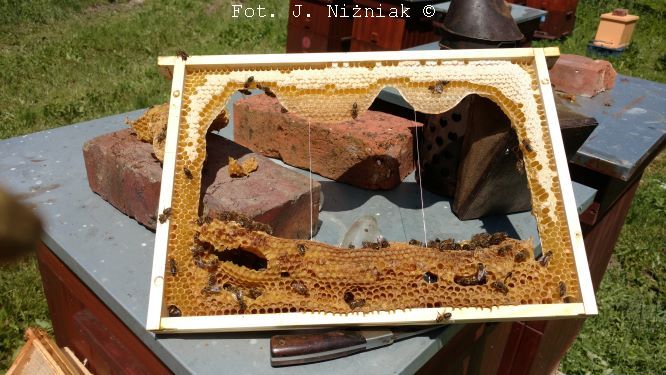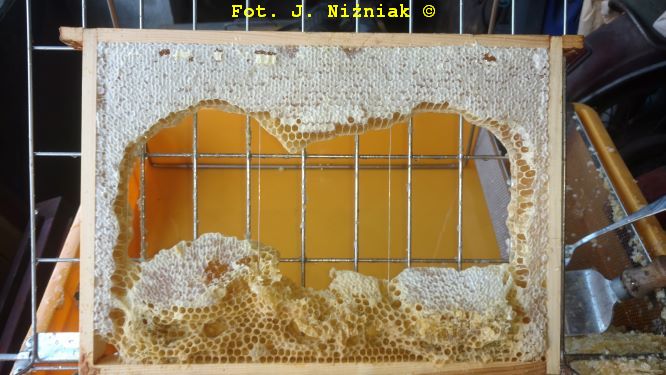Beeswax quality testing
According to European Union regulations, beeswax is classified as a so-called category 3 animal product. In view of this classification, it has so far been treated as a by-product of animal origin which is not intended for human consumption and therefore did not pose a potential risk in the food chain and was consequently not subject to strict official control. This classification is quite controversial as there is a possibility of using beeswax as a food additive (E901). Beeswax is also in close contact with honey while it is in honeycombs during ripening. Attention has been raised on the acaricide residues (substances in products used to fight off Varroa destructor) from wax getting into honey. Negative impact of beeswax foundation adulterated with paraffin on the quality of honey has been recently discovered.
With increasing demand for beeswax and relatively low supply, which does not even cover the needs of beekeeping, as well as the lack of mandatory regulations regarding the quality of beeswax, this product is being falsified on an increasing scale. Addition substances such as paraffin or stearin to beeswax lowers the quality of foundation and, consequently, often prevents the use of such falsified product in beekeeping and other industries (e.g., cosmetics, pharmaceuticals, food). So far, the beeswax quality control system located on both national and European market, was practically non-existent. For many years there was no known reason to control beeswax. That changed when the effects of falsified beeswax became dangerous for bees, and concerns about the impact on human health were raised as beeswax is used as a food additive (E901).
Dangerous effects of beeswax adulteration
The effects of using foundation made from adulterated beeswax are unpredictable and may vary based on many different factors. Poor reconstruction of combs or a complete lack of interest of bees in extracting the foundation are the most common symptoms observed by beekeepers. Combs sliding off the wires, both with honey and brood are the phenomena appearing when falsified foundation is used. What is more adulterated foundation can pose a threat to the brood rearing. Stearin is particularly dangerous. It was proven to cause high mortality of larvae.





European Food Safety Authority (EFSA), in 2020, published a report in which risks associated with beeswax adulteration were assessed both for bees and humans. In the report the negative influence of the falsified foundation on bee colonies were confirmed. What is more risks for human health associated with the consumption of honey that matures in comb foundation adulterated with paraffin or stearin.
Because of the reasons stated before, in the near future, the quality requirements for beeswax will most likely be regulated by the European Commission, and it can therefore be assumed that the quality control of this product will soon be sanctioned.
Our laboratory uses one of the most advanced methods to identify ‘false’ beeswax using FTIR-ATR technique (Attenuated Total Reflectance Fourier Transform Infrared Spectroscopy). We can detect 3% addition of steric and 3% paraffin in beeswax.
The FTIR-ATR method is recommended by International Honey Commission in assessment of beeswax quality.
Why should you order the analysis of beeswax?
To avoid the dangers connected with insertion of comb foundation made with adulterated beeswax in your apiary, you should order a test on our Laboratory. We also encourage producers of beeswax foundation to check with us the quality of beeswax they buy.
Our services are also directed to other industries in which beeswax is widely used in different applications. For pharmaceutical, cosmetic, and food companies the quality of wax they are using (confirmed with a test) should be also of a great importance.
To conduct the analysis 10 g of wax or a piece of foundation (roughly 15 cm x 15 cm) is enough.
The sample should be sent to the Laboratory address with completed and signed Order Form.

